This Brooklyn Brownstone Has the Most Incredible Original Woodwork
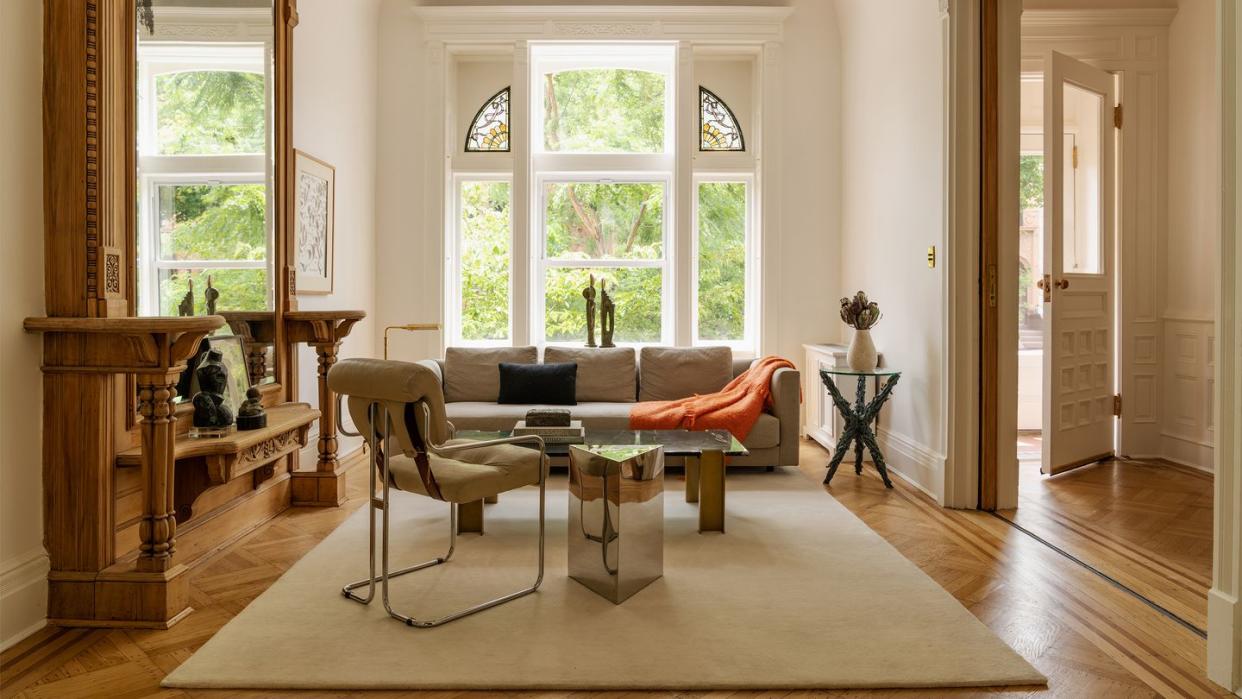
"Hearst Magazines and Yahoo may earn commission or revenue on some items through these links."
"The moment I realized the original light oak parquet floors were intact throughout the whole house, I knew this was a project I had to take on," James Jenkin says. The interior designer is no stranger to old homes with historic qualities—in fact, they're his passion projects. But when he first saw the Romanesque Revival Brooklyn brownstone, with its myriad of quirks and interesting layout, Jenkin knew there was something different about it.
He was right: It was in fact unique. "I was told that this row of homes were the only ones this architect ever built, which is a pity, but it means the row stands apart from most others," Jenkin says. Besides the parquet floors, there were also an original pier mirror, plaster walls, and much of the beautiful woodwork, which Jenkin would spend the majority of his budget restoring. "The intention was in visiting the house, no one can tell when it was renovated," he explains. "They just see an amazing home that feels like it has rather immaculately survived the test of time."
Finding gems like this one with so many of the original elements intact is getting harder to do in New York City, Jenkin says, so it was essential to him to preserve them. "It felt like a travesty to stray too far away from what the original architect had intended," he says. That's why he tried to keep as much of the five-bedroom, five-bath home's layout unchanged, no matter how unusual or "lacking by modern standards" it might be.
This took a lot of creative problem solving on Jenkin's part. One of the building's more significant quirks is its triple parlor. This rare feature allows a gorgeous central staircase be visible throughout the home, but it made placing a dining room difficult, and the idea of blowing out a wall to make one for his clients was not acceptable to Jenkin. Instead, he moved a built-in cabinet from the middle parlor to the back one and situated the dining table at the bottom of the staircase. "It is not a conventional location for a dining table, but it provides a wonderful and unique view looking up at the beautiful staircase," he says.
Once the structural wrinkles had been ironed out, Jenkin could focus on the decor. "Buy what you love and make it work," is the adage he always tries to follow when it comes to interiors. "I'm a firm believer that if you buy things you truly love, no matter how diverse the object styles, there is inherently a common thread there already—it's just a matter of experimentation to form the right narrative to pull them together," he says.
Jenkin did include some more modern pieces here and there—"a little bit of lust is also good for the soul," he says—but he made a conscious decision to steer away from any trendy items that wouldn't stand the test of time. "I like to truly invest in the main bones of the house and more classic bigger pieces," he says. Stepping into the brownstone now, you can feel that intention.
Entryway
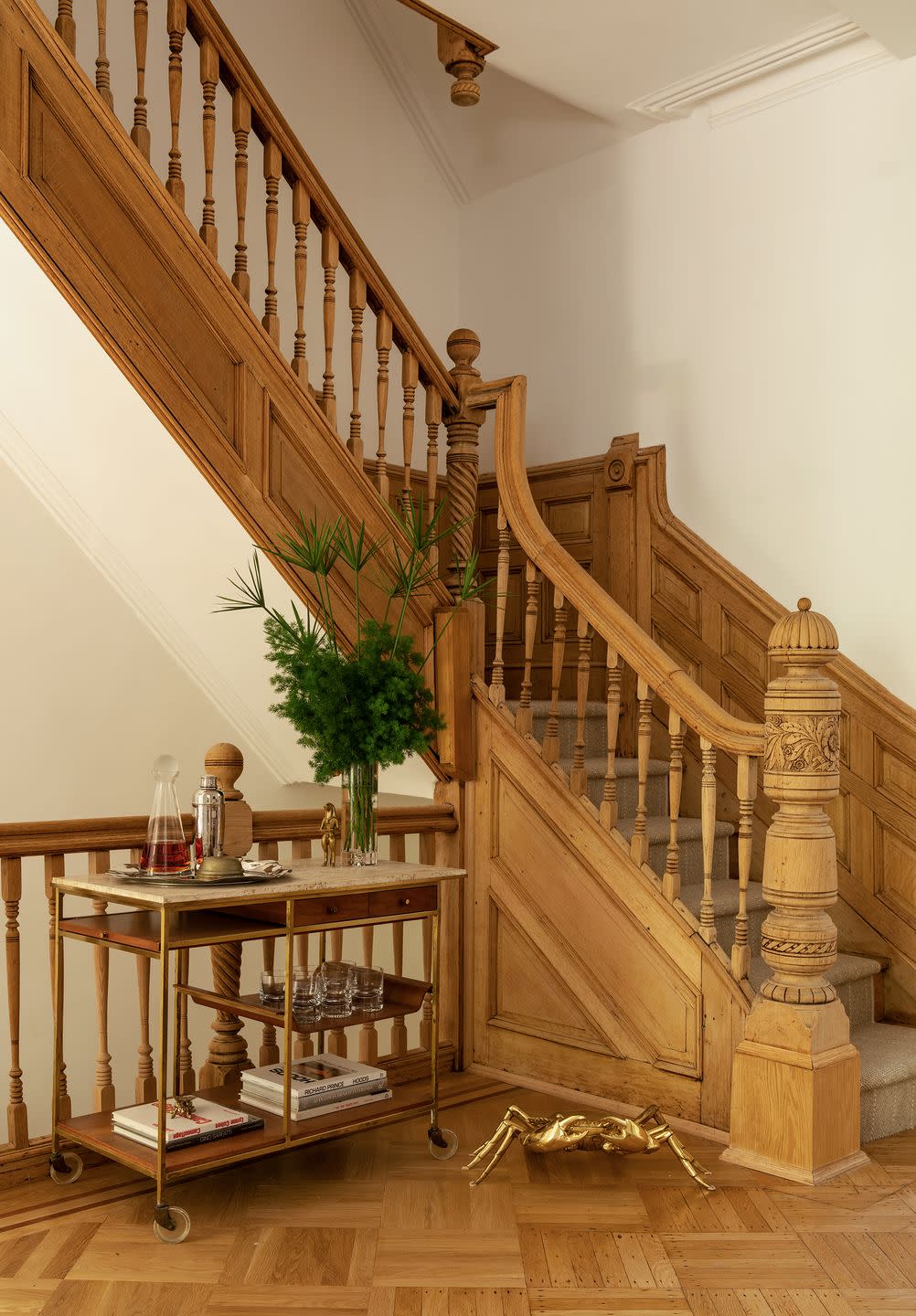
"The juxtaposition of the historic woodwork against crisply renovated white plaster walls is something you never tire of," Jenkin says. He used a light color palette of warm whites to keep the focus on the trim. To let more light into the triple parlor, he put in a skylight above the staircase.
Bar cart: Paul McCobb. Tray: Alessi.
Living Room
Pictured on main.
The front parlor is drenched in natural light thanks to an oversized arched window with original stained glass. Jenkin says it gives the home "a cinematic quality."
Side table and art: Marco Vega. Chair: Guido Faleschini for Mariani/Pace Collection. Pendant: CB2. Blanket: Maison Flaneur.
"Part of this passion is that I love the hunt," Jenkin says. "I spent many late nights trawling UK eBay to find incredible brass hardware from British midland foundries at a fraction of the price of new hardware here and on French eBay to find styling objects."
Kitchen
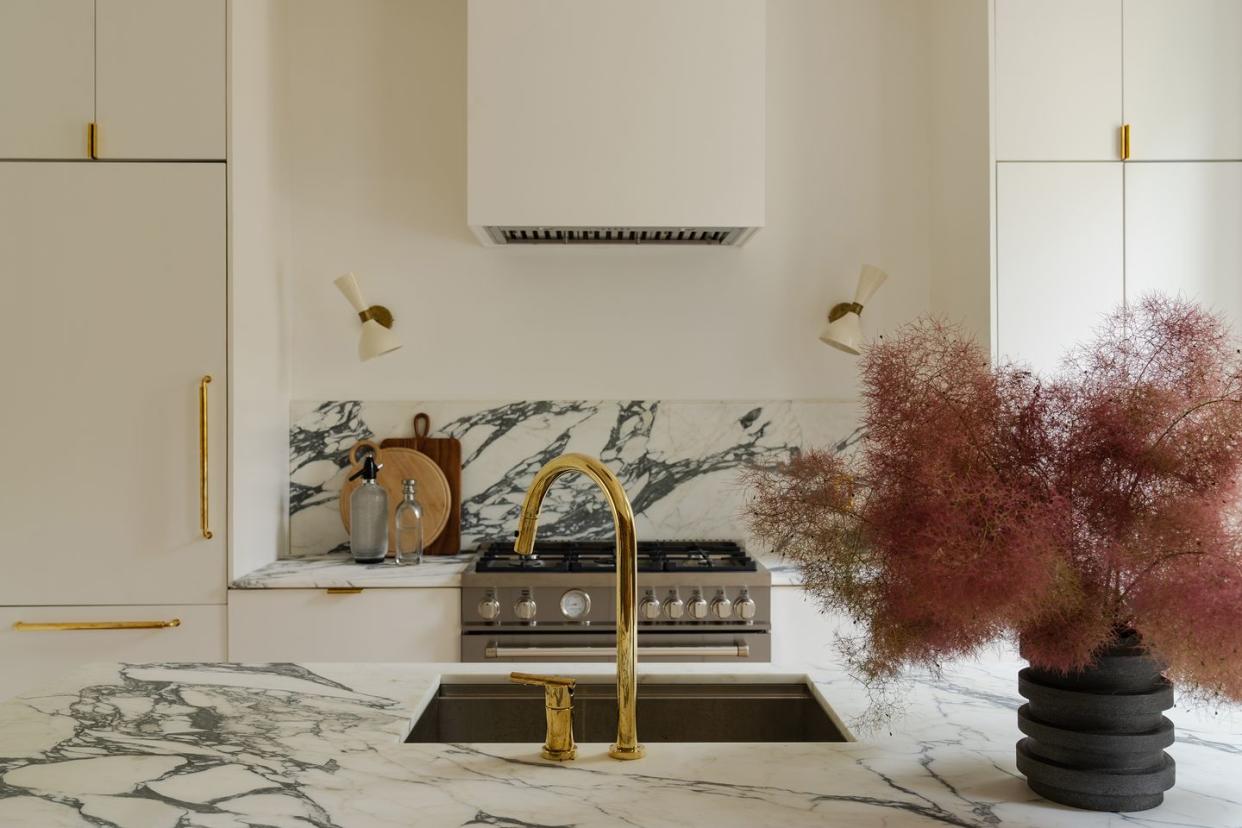
The kitchen is the most modern-looking part of the home. However, with the brass details and neutral color palette, it's designed to age with elegance.
Faucet: Newport Brass. Cabinet hardware: Willow & Stone. Refrigerator hardware: Baldwin.
Jenkin's original concept for a new deck off the back of the house and overlooking the garden didn't work out exactly as planned: "Height regulations meant it would not be even with the interior floors," he says. So instead of raising the original floors, he built a marble threshold that matched the kitchen countertops to serve as a step up to the deck. "The quirky step ended up far more charming than what we would have had if the floors had been the 'right' level."
The original oak built-in cabinet that Jenkin moved from the middle parlor to the back one now serves as kitchen cabinetry.
Cabinet hardware: Croft Architectural Hardware. Umbrella stand: Franco Albini.
Dining Area
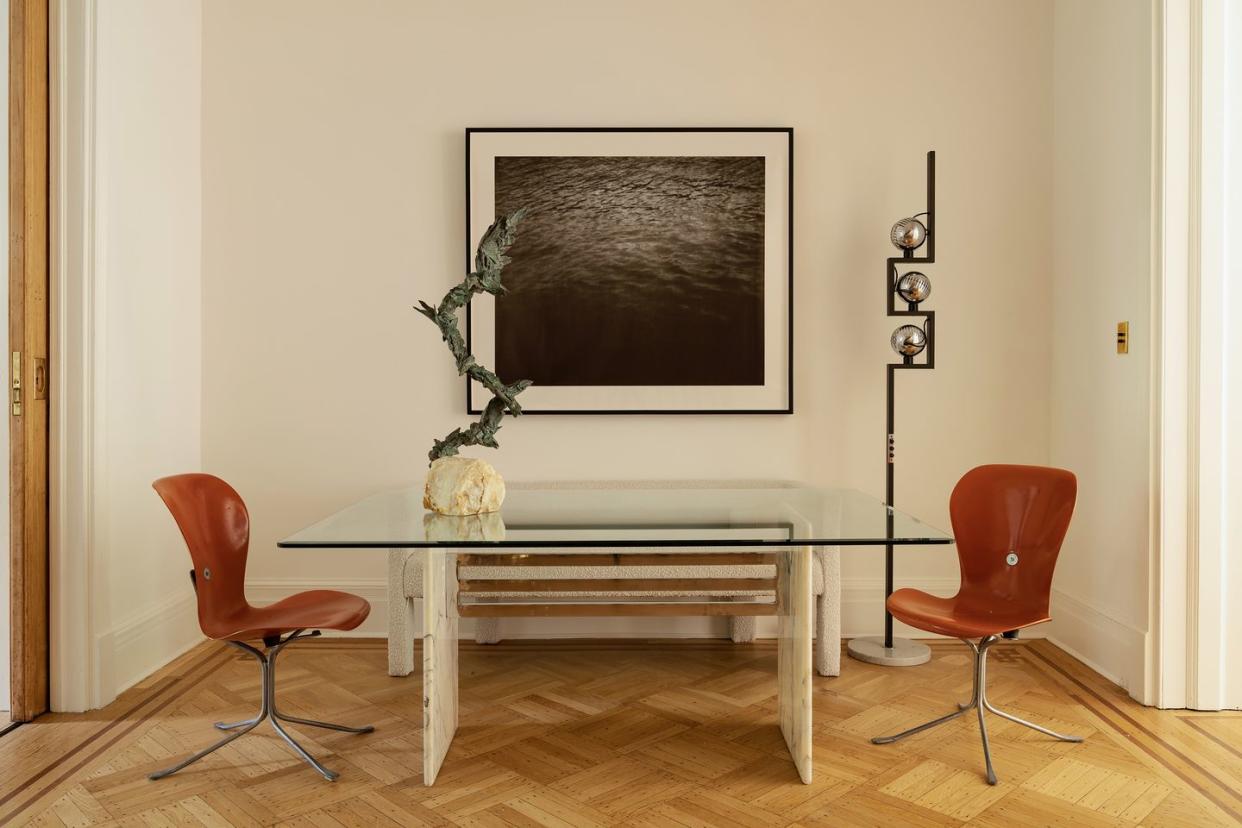
The large dining space Jenkin put at the bottom of the central staircase gives his clients plenty of room to entertain and a prime vantage point to admire the original woodwork.
Sculpture: Marco Vega. Art: Felix Gonzalez-Torres. Chairs: Gideon Kramer. Lamp: Angelo Lelii for Arredoluce.
Bedroom
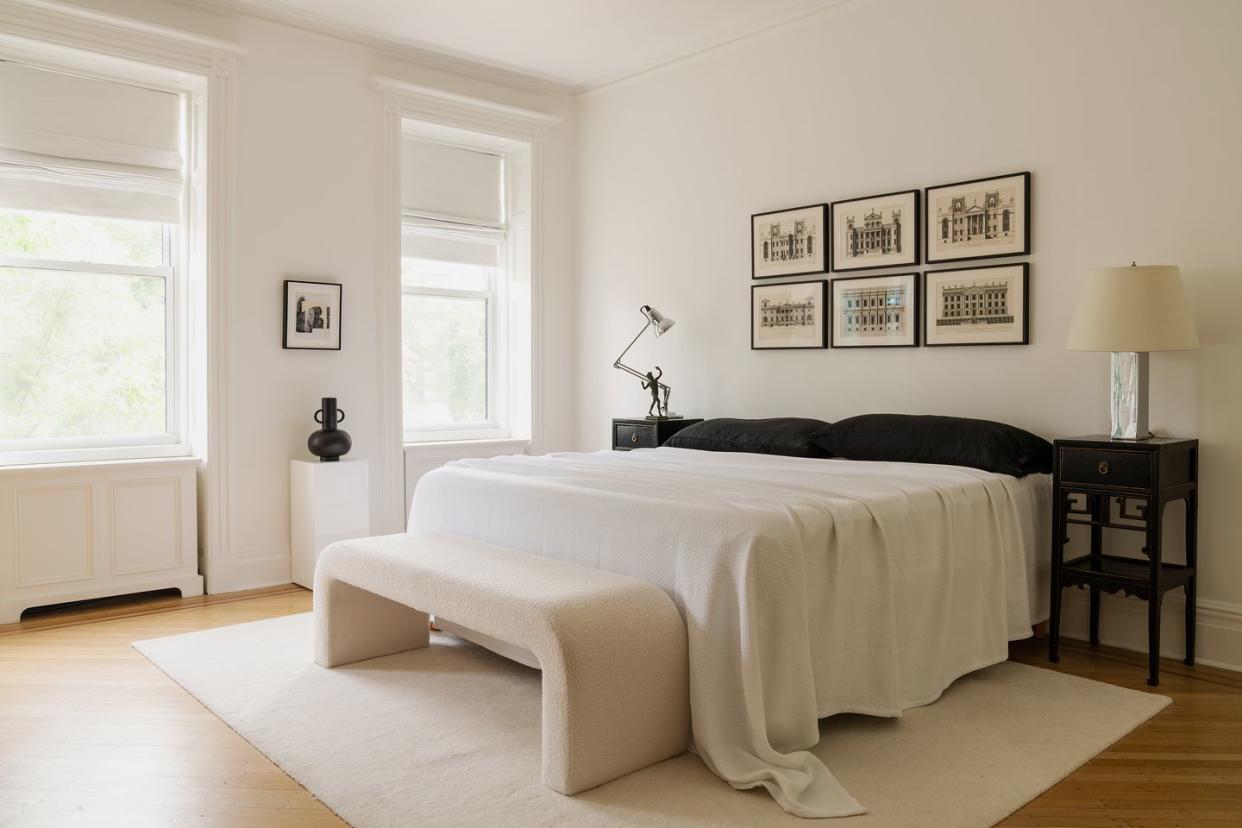
Rather than change the layout and turn the smaller ensuite bathroom off the primary bedroom into something larger, Jenkin moved the sink into a sitting room that now serves as part dressing room, part vanity area. The antique Vitruvius Britannicus prints over the bed are by Colen Campbell.
One of Jenkin's favorite examples of his slow-decorating process is on the bedside table in the primary suite. "A small, 18-century bronze fawn statue ended up finding a home staring up into a 1920s Anglepoise lamp. It feels a bit Samson & Goliath, and has a touch of humor, but would only have happened with experimentation," he says.
Chair: Grant Featherston. Pendant: vintage Pierre Guariche. Mirror: CB2. Floor lamp: Koch & Lowy. Bench: antique, in Pierre Frey fabric.
Backyard
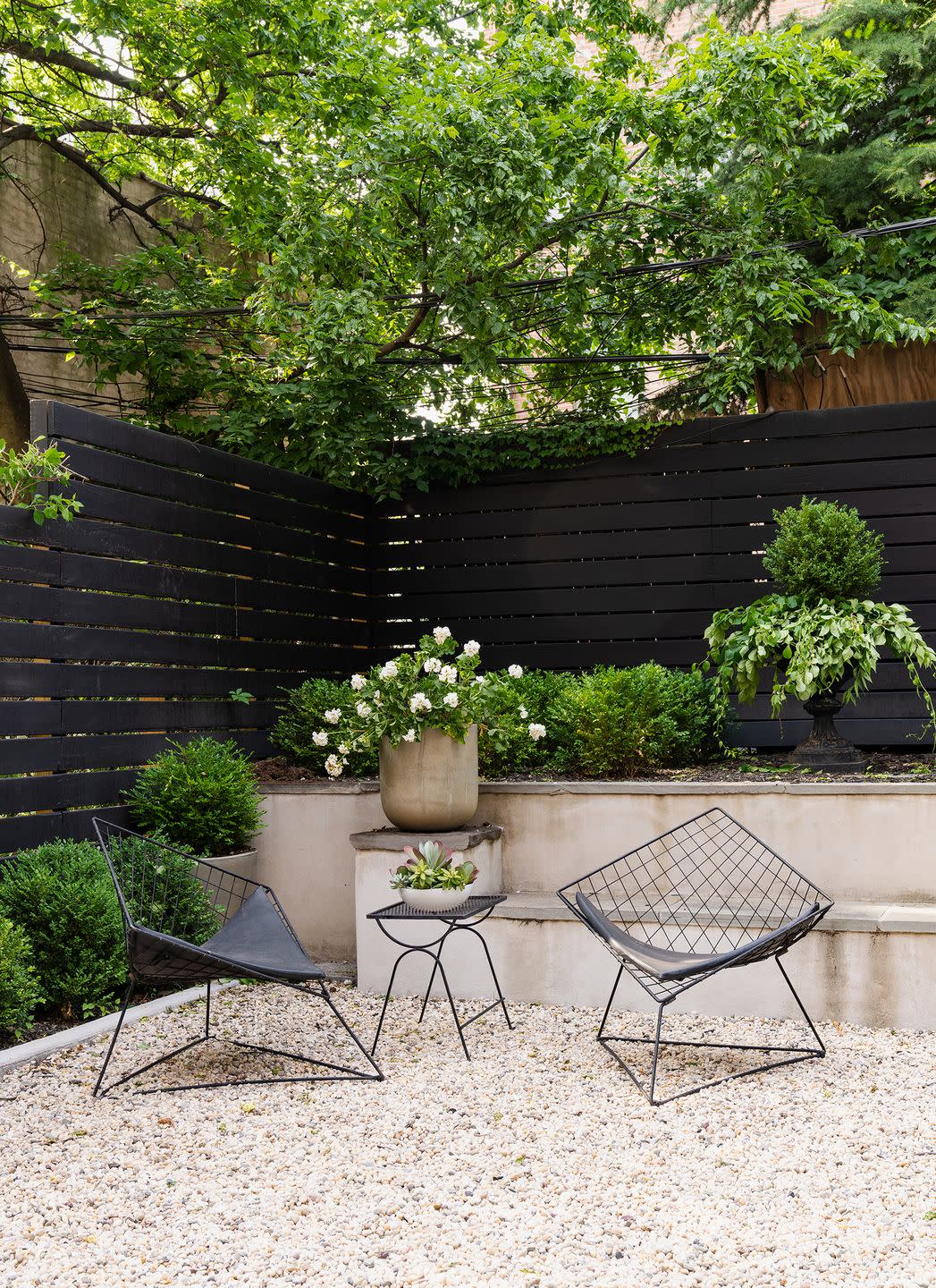
Jenkin's goal for the outdoor space was to create "a timeless secret New York City garden—no bells and whistles, just a quiet oasis of green where it feels like time stands still for a bit and you can catch a breath," he says. In the spirit of repurposing as much as possible, he repotted and reused some of the plants from the original garden.
Urn (top right): antique J.W. Fiske. Chairs: vintage Niels Gammelgaard for Ikea.
Q&A
House Beautiful: How did you save money/DIY/get crafty?
James Jenkin: The biggest cost saving was I did so much of the project myself, from the architectural work to the build and interior design. I didn't do this to save cost per se, and I know that is not for everyone. In my case, these renovations are always passion projects, but the cost savings is a nice consequence. I probably saved 50 percent of the project cost doing things myself.
Instead of always buying custom everything, I also often like to buy standard building items and tweak them. For example, for historic homes, I'll buy good quality but simple Shaker doors and add some decorative trim to the inset areas that relate to the existing woodwork. That way, the doors look original at a fraction of what the price would've been if I had all the doors custom made.
HB: Any other memorable details?
JJ: Aside from the accomplishment of completing the house itself, I think the thing I will most remember, from not just this but my various projects in Brooklyn, is the wonderful people I have met when doing them. I have been renovating brownstones for years, and there is an incredible community of people in Brooklyn who are equally passionate about their preservation.
Styling by James Jenkin, Marco Vega, and Ori Harpaz
Follow House Beautiful on Instagram and TikTok.
You Might Also Like
